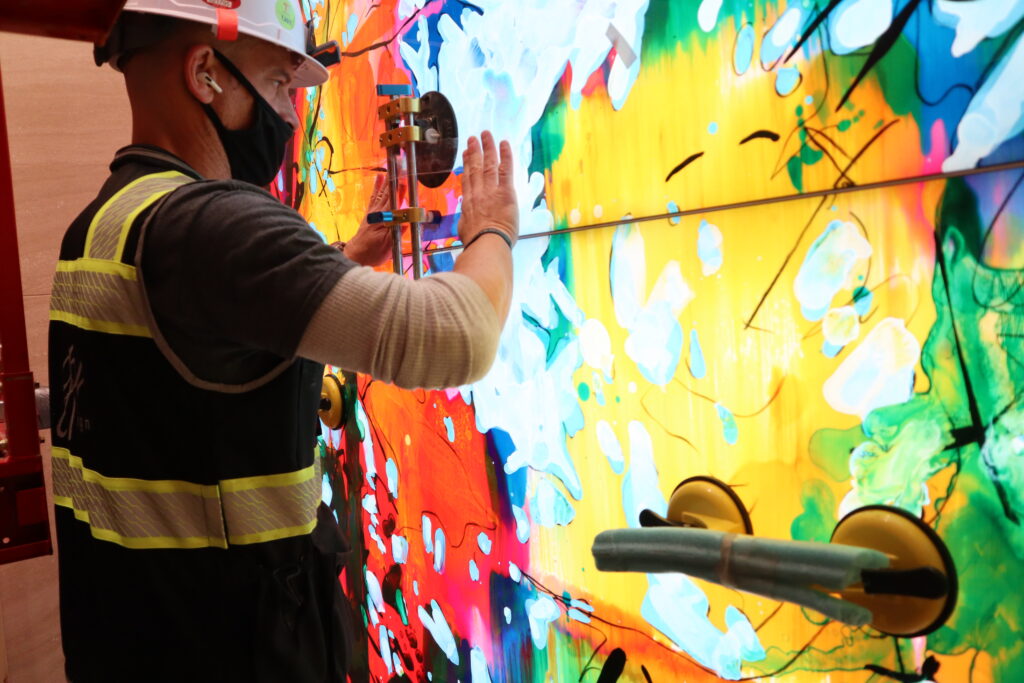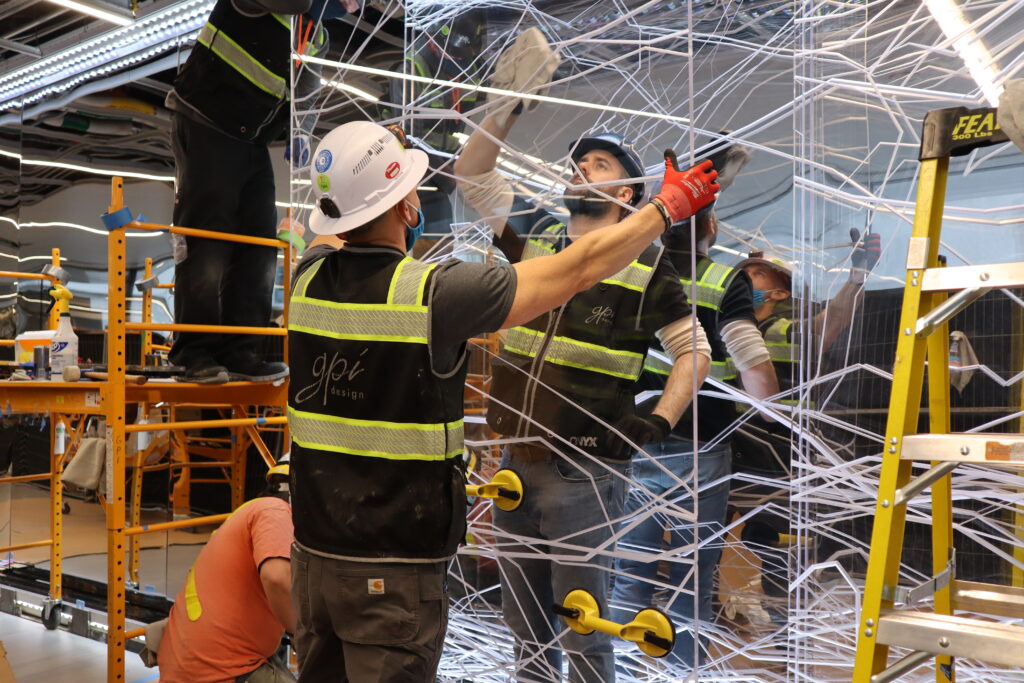Backlit Art
Let’s delve into the topic of backlighting art.
There are nearly endless options for the creation of art, but often, the material or inks in most art are not translucent. This is one of the biggest challenges in backlighting art as most pigments and substrates are not designed with translucency in mind. To achieve adequate balanced translucency there are two main approaches: converting the original artwork to a digital format (if it’s not in the format already) and laminating the print or between two layers of glass, OR printing/mounting the art directly onto a single layer of glass. (It’s important to note that art comes in various forms, and in this context, we are specifically referring to two-dimensional artworks).
But transferring the artwork onto a translucent medium isn’t the only challenge. The type of light fixture and the intensity of that fixture also need careful discovery to optimize the artwork. Consider the color temperature of the light source, as extremely high or low Kelvin temperatures can alter the appearance of the original. As a general guideline, starting with a neutral influence of around 4100 Kelvin is recommended to preserve the original colors of the artwork unless intentionally seeking a transformative effect. Studying the combination of art and glass with your chosen lighting options will require some time and experimentation. While the goal is to enhance the art through backlighting, it is essential to avoid altering its essence.
Also, consider the aesthetic context of the artwork itself. Is it a colorful abstract creation with heavy movement and highly saturated colors? Or is it a monochromatic photograph of a stark landscape with little figural movement and vast open areas? The two will illuminate differently and will require customization of the lighting fixture and control of the light intensity to truly sing.
In summary, backlighting art is tricky. With the multitude of lighting strategies available, it is crucial to understand how the artwork behaves as a lens, and then design and manipulate the lighting to enhance the artwork to your desired effect.


